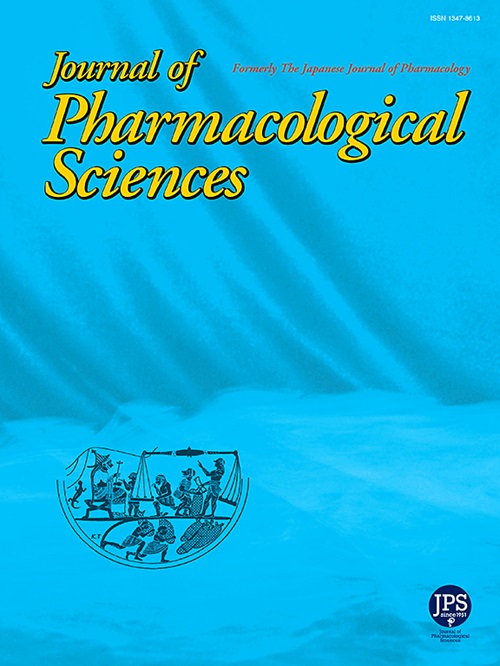Theanine boosts frontal theta and hippocampal beta and gamma oscillations for familiarity in object recognition
IF 2.9
3区 医学
Q2 PHARMACOLOGY & PHARMACY
引用次数: 0
Abstract
Object recognition memory encourages animals to distinguish between new and known objects, supported by neural activity in the hippocampus, prefrontal cortex, and perirhinal cortex. Theanine, a non-proteinogenic amino acid derivative from green tea leaves, enhances object recognition memory in rats through facilitated neurogenesis. Although the cellular mechanism for the theanine-enhanced object recognition memory has been elucidated to some extent, physiological evidence still remains unclear. To tackle this issue, we chronically fed mice with theanine (or tap water) for three weeks, implanted electrodes into the hippocampus and frontal cortex, both of which are responsible for object recognition memory. We then recorded the local field potentials from the two regions during the novel object recognition task, evaluated the memory performance, and broke down the neural signals in the hippocampus and frontal cortex into delta, theta, beta, low gamma, and high gamma frequency bands. The memory performance of theanine-treated mice was higher than that of vehicle-treated mice. We also found that theta oscillations in the frontal cortex and beta and low gamma oscillations in the hippocampus in theanine-treated mice were simultaneously enhanced for familiar objects. These results shed light on the new physiological underpinnings of object recognition memory enhanced by exogenous substances.
茶氨酸促进额叶θ波和海马β波和γ波的振荡,以熟悉物体识别
物体识别记忆鼓励动物区分新的和已知的物体,这是由海马体、前额叶皮层和鼻周围皮层的神经活动支持的。茶氨酸是一种从绿茶中提取的非蛋白质氨基酸,通过促进神经发生来增强大鼠的物体识别记忆。虽然茶氨酸增强物体识别记忆的细胞机制已在一定程度上得到阐明,但生理证据仍不清楚。为了解决这个问题,我们长期给老鼠喂食茶氨酸(或自来水)三周,在海马和额叶皮层植入电极,这两个区域都负责物体识别记忆。然后,我们记录了在新物体识别任务中两个区域的局部场电位,评估了记忆表现,并将海马和额叶皮层的神经信号分解为δ、θ、β、低伽马和高伽马频段。茶氨酸处理小鼠的记忆能力明显高于灌胃小鼠。我们还发现,在茶氨酸治疗的小鼠中,额叶皮层的θ波振荡和海马体的β波和低伽马波振荡在熟悉的物体面前同时增强。这些结果揭示了外源性物质增强物体识别记忆的新生理基础。
本文章由计算机程序翻译,如有差异,请以英文原文为准。
求助全文
约1分钟内获得全文
求助全文
来源期刊
CiteScore
6.20
自引率
2.90%
发文量
104
审稿时长
31 days
期刊介绍:
Journal of Pharmacological Sciences (JPS) is an international open access journal intended for the advancement of pharmacological sciences in the world. The Journal welcomes submissions in all fields of experimental and clinical pharmacology, including neuroscience, and biochemical, cellular, and molecular pharmacology for publication as Reviews, Full Papers or Short Communications. Short Communications are short research article intended to provide novel and exciting pharmacological findings. Manuscripts concerning descriptive case reports, pharmacokinetic and pharmacodynamic studies without pharmacological mechanism and dose-response determinations are not acceptable and will be rejected without peer review. The ethnopharmacological studies are also out of the scope of this journal. Furthermore, JPS does not publish work on the actions of biological extracts unknown chemical composition.

 求助内容:
求助内容: 应助结果提醒方式:
应助结果提醒方式:


